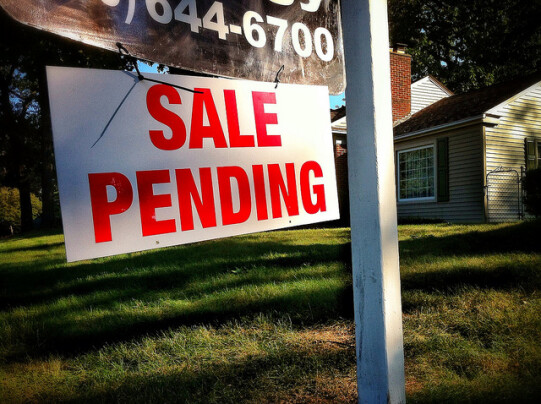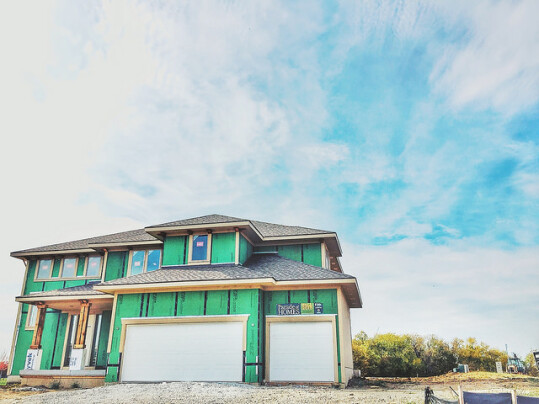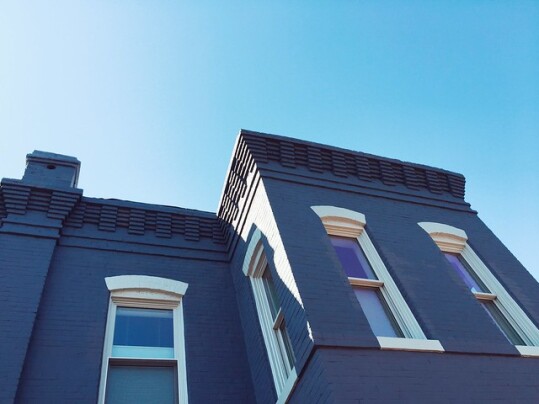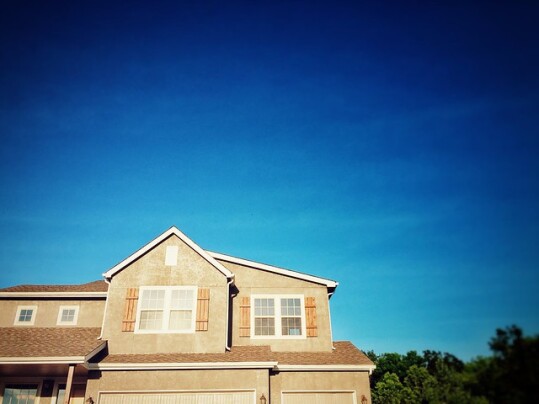Buying a home is a process. There are several steps between the day you’re approved to borrow and the day you get keys to your new home. Among them, having an offer accepted and signing the contract to buy is a big one. Barring something unforeseen, it means you’re a few weeks away from closing on your house and getting ready to move. That’s why, after the contract is signed, the home’s sale is considered pending. It’s also why the National Association of Realtors tracks pending sales each month, because they’re a good indicator of future home sales. According to their most recent report, contract signings fell in January, dropping 5.7 percent from the month before. Lawrence Yun, NAR’s chief economist, says it’s likely because the inventory of homes for sale remains low. “With inventory at an all-time low, buyers are still having a difficult time finding a home,” Yun said. Fortunately, though, listings usually pick up in spring, when the traditional buying season begins. As more homes become available for sale, there will be more options to choose from, which should help slow price increases and competition among buyers . (source)
Archive for February 2022
Contracts To Buy Homes Fall In January
Building Permit Increase Good For Buyers
Affordability is a top concern for today’s home buyers. Mortgage rates have risen recently and home prices continue to climb. But while it may seem like buyers haven’t gotten any good news lately, the most recent new residential construction report from the U.S. Census Bureau and the Department of Housing and Urban Development contains some encouraging signs. The report found that, in January, permits to build new, single-family homes rose 6.8 percent from the month before. And, because spiking home prices are primarily being driven by a historically low number of homes for sale, any news of an increase in new home construction is good news for buyers. After all, as more new homes are built, the balance of supply and demand will become more favorable, which will help slow price increases, competition, and bidding wars. In other words, increasing building permits are a positive sign that the inventory shortage may soon begin to improve, helping affordability and buyers’ chances at finding a good home that fits both their needs and budget.
Mortgage Rates Rise Again In Latest Survey
According to the Mortgage Bankers Association’s Weekly Applications Survey, average mortgage rates increased again last week, moving up across all loan categories. Rates were higher than one week earlier for 30-year fixed-rate loans with both conforming and jumbo balances, loans backed by the Federal Housing Administration, and 15-year fixed-rate loans. For the most part, the increases were small but still enough to slow mortgage application demand. In fact, refinance activity fell 16 percent from the week before, while demand for loans to buy homes dropped 6 percent. Joel Kan, MBA’s associate vice president of economic and industry forecasting, says it was the third straight week purchase-application demand decreased. “Purchase applications, already constrained by elevated sales prices and tight inventory, have also been impacted by these higher rates and declined for the third straight week,” Kan said. The MBA’s weekly survey has been conducted since 1990 and covers 75 percent of all retail residential mortgage applications. (source)
Home Prices Had A Record Breaking 2021
By now, just about everyone knows home prices rose in 2021. Even if you weren’t shopping for a home last year, you probably came across a headline or news story covering the accelerated pace of price increases. What you may not know, though, is just how high they climbed. New numbers from the S&P Case-Shiller Home Price Indices give us a better idea. According to their most recent release, prices nationwide posted an 18.8 percent increase last year. Craig J. Lazzara, managing director at S&P, says it was the highest in decades. “For the year, the National Composite Index recorded a gain of 18.8 percent,” Lazzara said. “This is the highest calendar year increase in 34 years of data, and substantially ahead of 2020’s 10.4 percent gain.” Fortunately, though 2021 was a record-breaking year for home values, this year’s outlook calls for a much slower rate of increase, as most experts believe the market will begin to balance and price increases will slow considerably. (source)
Economic Outlook Looks At Housing Affordability
Each month, Fannie Mae’s Economic and Strategic Research Group releases an outlook covering the housing market and overall economy. The group looks at economic growth and policy, home prices, mortgage rates, and sales expectations. In February, their outlook addresses housing affordability and the likelihood that the market will slow from last year’s frenetic pace. According to the release, they foresee home sales and price increases moderating in 2022. In fact, the group projects home price growth of 7.6 percent this year and 3.3 percent in 2023, down significantly from the double-digit increases seen last year. However, Doug Duncan, Fannie Mae’s senior vice president and chief economist, says there are still some unknowns. “For home buyers, we believe that borrowing costs will likely rise with the increase in mortgage rates,” Duncan says. “What remains unknown is how higher mortgage rates and tighter monetary policy – through expected interest rate hikes and changes to the makeup of the Fed’s portfolio – will impact home prices.” Ultimately, they expect housing activity to be supported by demographic factors and the shortage of homes for sale. (source)
Existing Home Sales Spike In January
In January, sales of previously owned homes rose 6.7 percent from the month before, according to new numbers from the National Association of Realtors. The increase follows a 4.6 percent drop in December and puts sales 2.3 percent lower than they were last year at the same time. Lawrence Yun, NAR’s chief economist, says home buyers are likely trying to lock in low mortgage rates before they move any higher. “Buyers were likely anticipating further rate increases and locking in at the low rates, and investors added to overall demand with all-cash offers,” Yun said. “Consequently, housing prices continue to move solidly higher.” Low inventory is the primary factor driving price increases and, in January, the number of homes for sale fell even lower, dropping 2.3 percent month over month. And, with inventory still low, homes are selling quickly. In fact, the report found 79 percent of homes sold during the month were on the market less than a month. (source)
New Home Market Affected By Supply Issues
When there aren’t enough homes for sale, prices increase. To ease the upward pressure on prices, more homes are needed. That’s why the new home market is such an important piece of the affordability puzzle. When builders are confident, more homes are built, the market balances, and prices moderate. Because of this, the National Association of Home Builders surveys builders each month to gauge their confidence. According to the most recent survey, builders are optimistic but increasingly concerned about supply-side issues. “Production disruptions are so severe that many builders are waiting months to receive cabinets, garage doors, countertops, and appliances,” NAHB chairman, Jerry Konter, says. “These delivery delays are raising construction costs and pricing prospective buyers out of the market.” It’s true. Residential construction costs are up 21 percent from where they were last year at the same time. Still, the survey – which is scored on a scale where any number above 50 indicates more builders view conditions as good than poor – remains above 80, falling just one point in February. (source)







